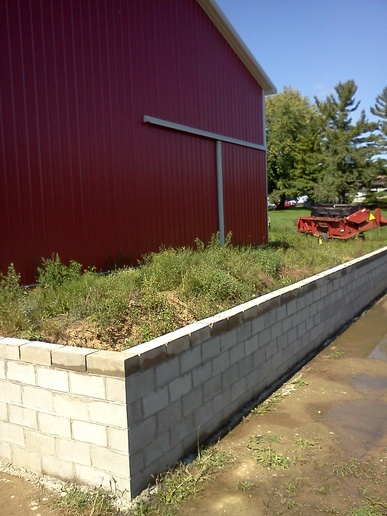Dave H (MI)
Well-known Member
Back in June of this year I asked for advice here on how to do a block retaining wall on the east end of my barn and received some really excellent responses. I watched some YouTube and read some websites also. Here is a picture of the finished wall...or nearly finished. Even though I liked it bare, I put some white paint on the outside which I expect to weather and peel and look rustic. Footing is well below frost at almost 4'. Rebar comes vertically out of the footing. The third course is a bond beam reinforced with rebar and tied into the verticles. Also tied into the bond beam are 6-7 horizontal rebar that go straight back into the soil 5' behind the wall. Each of those has a large concrete rectangle poured around the end of it that tie the wall into the backfill. Like a "dead man". Hope I did this right. If there are any glaring errors, just don't tell me. I will worry about it all winter. What's done is done. 
In the background is the 820 combine head. Just got that on the combine and checked that it works. Behind that is what used to be the neighbors house. We bought them out a year ago. Got some great trees in the deal. I think that is Tom O'Conner'ss old truck back there on the drive...or my pickup...same color. Anyway, thanks for the advice. It was a great project and I was in better shape when I was done than I have been in years!


In the background is the 820 combine head. Just got that on the combine and checked that it works. Behind that is what used to be the neighbors house. We bought them out a year ago. Got some great trees in the deal. I think that is Tom O'Conner'ss old truck back there on the drive...or my pickup...same color. Anyway, thanks for the advice. It was a great project and I was in better shape when I was done than I have been in years!



